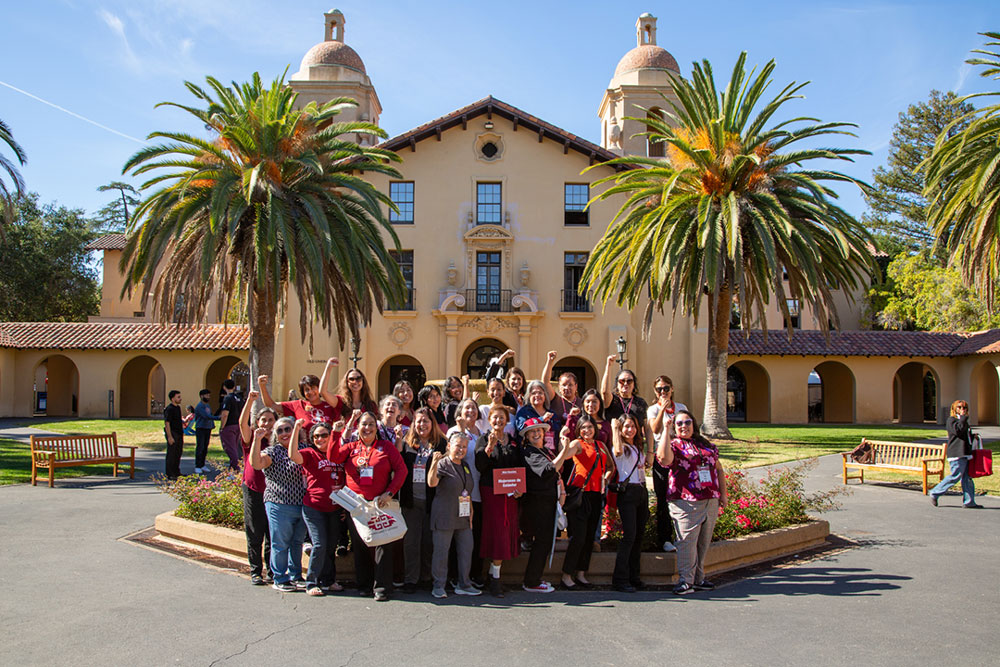
I wear my sunglasses at night.
A tiny wireless chip and high-tech glasses have restored partial vision to patients with advanced age-related macular degeneration. The condition, which affects more than 5 million people worldwide, gradually erodes central vision. The new device, called PRIMA, is the result of decades of research and is the first prosthesis to restore functional sight (namely, the ability to perceive shapes and patterns) to patients with incurable vision loss. A small glasses-mounted camera captures images and projects them via infrared light to a chip implanted underneath the retina. That chip takes the place of damaged photoreceptors, converting the images into electrical stimulation to be received by the brain. Using infrared light is key: It’s invisible to any peripheral photoreceptors that still function in patients’ eyes, allowing them to use prosthetic and natural peripheral vision together.
In a clinical trial, 27 out of 32 patients regained the ability to read such items as books, food labels, and subway signs a year after receiving the device. “Number one on the patients’ wish list is reading,” said Daniel Palanker, a professor of ophthalmology and a co-senior author of the paper. “But number two, very close behind, is face recognition.” Next up, therefore, is upgrading the software from black-and-white to full grayscale.
Pains on Main Street, gains on Wall Street.
A booming stock market despite weak economic growth? According to GSB assistant professor James Paron, who studies finance, it’s not a contradiction, it’s a trend 50 years in the making. Paron’s research shows that the stock market’s rise since the 1970s has not been due to an increase in the value of companies. Rather, it’s due to a decline in innovation productivity. “When innovation gets harder, firms spend less on R&D,” Paron says. Instead of investing in new ideas, companies buy up their competitors, creating large, efficient firms that dominate the market. What’s more, fewer new companies are entering the market, and more of those that do are seeking to be acquired by larger firms. The consolidation of companies can sometimes spur innovation among those smaller companies hoping to be bought. But the broader outcome is clear: In this “wealth of stagnation,” shareholders are enjoying disproportionately rich returns while typical American households are worse off, with weak growth and fewer new ideas in the market.
Welcome home, 0s and 5s.
 Photo: H. Taghap
Photo: H. Taghap
Earlier this month, more than 8,000 alumni and guests (including this Mujeronas de eStánfor minireunion) returned to the Farm for Reunion Homecoming 2025. They packed MemAud, dined on the Quad, and cheered the Card to a 20-13 football victory over Florida State.
The pace setter.
Helen Brontë-Stewart knows what the brain sounds like. A professor of neurology and neurological sciences, Brontë-Stewart listens to the amplified sounds of neurons firing and uses that information to help surgeons precisely place electrodes in Parkinson’s patients’ brains for deep brain stimulation. In the lab, Brontë-Stewart works to refine DBS, a decades-old treatment that links electrodes in the brain with a device implanted in the chest to help modulate electrical activity and reduce the motor symptoms of Parkinson’s disease. Her team’s method, called adaptive DBS, takes a more personalized approach. “Like a cardiac pacemaker that responds to the rhythms of the heart, adaptive deep brain stimulation uses a person’s individual brain signals to control the electric pulses,” Brontë-Stewart told Stanford magazine. Earlier this year, with the clinical patients reporting significant improvement in symptoms, adaptive DBS earned FDA approval.
An ear for language.
Premature babies often spend their first weeks or months in the hospital, and during that time, typically hear less of their mothers’ voices than they would have in the womb. Scientists suspected that the reduced exposure to speech contributed to preemies’ increased risk for language delays. Now, a study has shown that playing a baby a recording of her mother’s voice makes a difference in preemie brain development. Forty-six babies who arrived more than eight weeks early were played recordings of their moms reading A Bear Called Paddington in their native language. The recordings were played in 10-minute chunks, for a total of 160 minutes each night. MRI scans showed that babies who heard their mother reading had more mature language-processing pathways than babies who did not. “It’s powerful that something fairly small seems to make a big difference,” said co-author Melissa Scala, a clinical professor of pediatrics.
But wait, there’s more. . .
“This spectacular heist in broad daylight could not come at a worse time for France’s ego and international image.” Cécile Alduy, professor of French and Italian, on what the Louvre jewel heist reveals about the France of today.
The 10 old TV series kids need to watch, according to linguist and New York Times opinion writer John McWhorter, PhD ’93.
AI is being trained on the conversations you have with it, says Jennifer King, privacy and data policy fellow at the Stanford Institute for Human-Centered AI.
David Kelley, MS ’78, a professor of mechanical engineering and co-founder of Stanford’s Hasso Plattner Institute of Design, or d.school, offers seven tips for anyone wanting to become more creative.
A new study reveals that snow leopards have long had stable populations despite their limited numbers and low genetic diversity, but with climate change threatening their narrow habitats, they’re at risk of extinction.
Soccer stars Christen Press, ’11, and Ali Riley, ’10, once Stanford roommates, have retired from their professional careers after 14 and 15 years, respectively.
The NBA season opened last week and Stanford counts among its alumni five players and a head coach (Mitch Johnson, ’09, of the San Antonio Spurs).
Note: The Loop sometimes links to articles outside of Stanford that may require a subscription to view.


